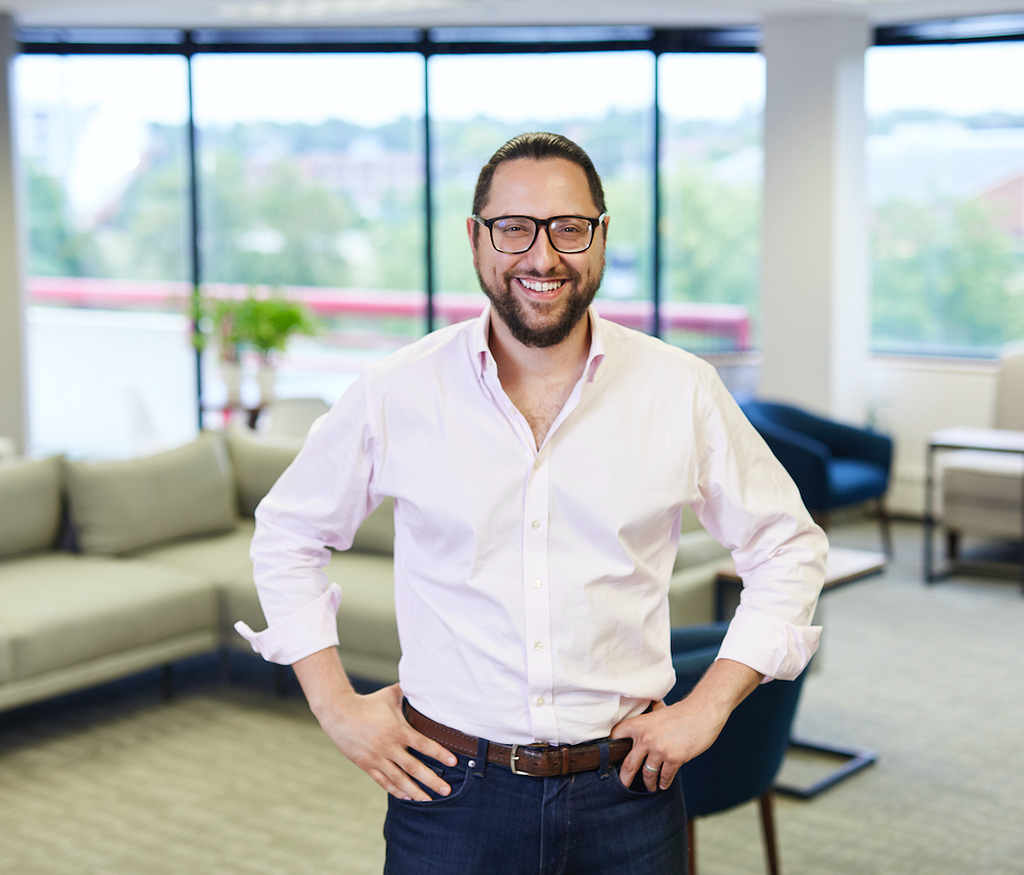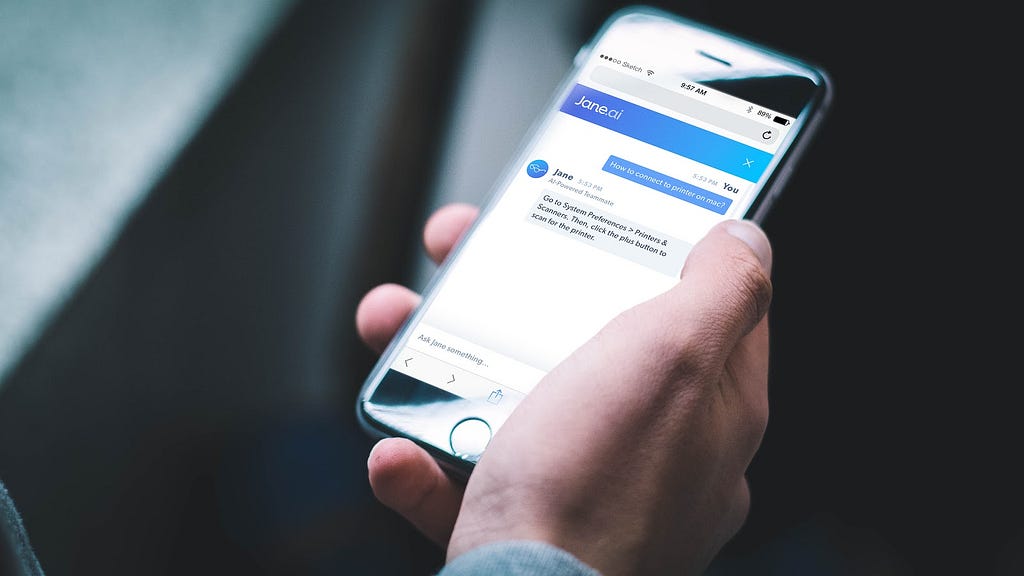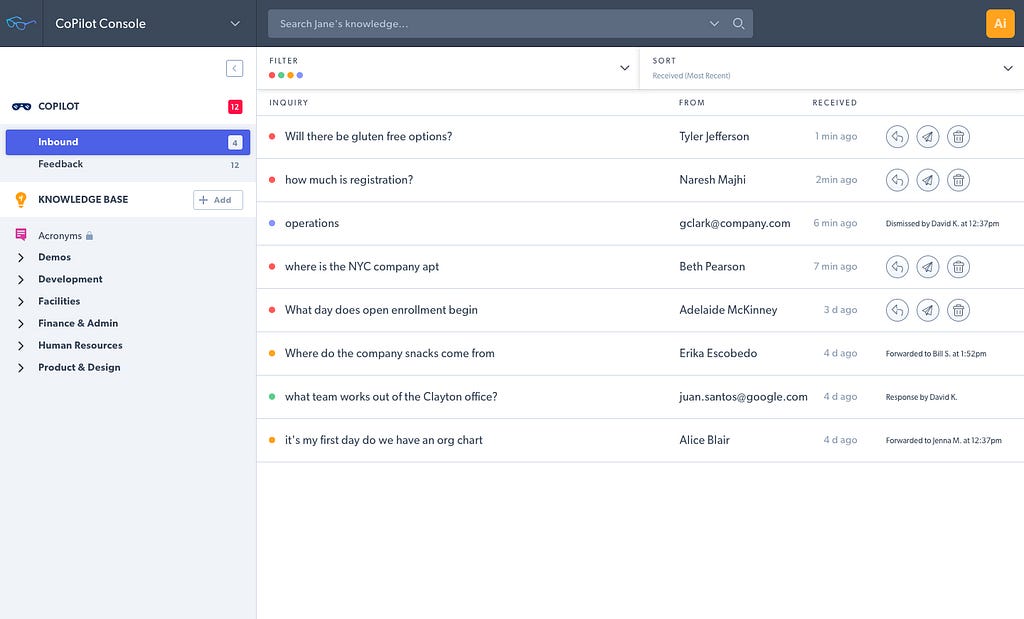Latest news about Bitcoin and all cryptocurrencies. Your daily crypto news habit.
 After selling his previous company for over $900 million, David Karandish is now building Jane.ai, an AI-native knowledge management platform to make company intelligence accessible in the simplest way possible.
After selling his previous company for over $900 million, David Karandish is now building Jane.ai, an AI-native knowledge management platform to make company intelligence accessible in the simplest way possible.
What’s your background, and what are you working on?
I’m David Karandish — CEO of Jane.ai, an enterprise artificial intelligence software company. We’re building an AI-native knowledge management platform to make all company intelligence accessible in the simplest possible way — via natural language. Before founding Jane.ai, I was the CEO of Answers Corporation. My business partner Chris Sims and I started the parent company of Answers in 2006 and sold the company to a private equity firm in 2014 for north of $900 million.
I received a bachelor’s degree in computer science and a second major in entrepreneurship from Washington University in St. Louis. I live in STL with my wife and our 3 daughters, 1 son, and zero cats.
What does your company do, and who uses it?
Jane makes company information accessible by integrating with apps, mining intel from docs, and learning tacit knowledge — giving team members instant access to all the information they need to excel in their work. Jane is unique because it is used by an entire team to gain near instant access to the information they need. We have customers in verticals such as financial services and education, and departments like HR and IT. In the last two years, we’ve had hundreds of thousands of questions go through our system.
We started with 6 people on January 1, 2017, and now have around 60 team members — and we’re still hiring!
What motivated you to get started with your company?
I came up with the idea for Jane because I was tired of how many emails I had to send or people I had to ask to get even a simple piece of information like, “When did we last adjust a team member’s compensation?” I was frustrated that Netflix knew more about my preferences than the software we used at work. I knew there had to be a better way. I saw the rise of platforms like Siri and Alexa in the consumer space and suspected that a similar concept could succeed in the workplace.
When we started the company, our goal was to sign our first paying client within 6 months — or pull the plug and move onto the next idea. We ended up signing our first client at month 5, day 30. I’m of the belief that if you can convince people to engage in the unnatural act of opening up their wallet and paying you for your service, then that’s a good gauge for validation.
After a successful exit from Answers.com, I had a never-ending list of ideas I wanted to pursue. Starting Jane.ai was the one idea that I knew I’d always regret if I didn’t try.
Before launching Jane, I had worked in the tech sector for over 17 years, in SaaS and online advertising and got to dust off my CS degree. If Jane.ai hadn’t succeeded, my next idea was a fast-casual Indian food restaurant. Maybe for another day…
What went into building the initial product?
Initially, we built a prototype. The first version of Jane existed as a chatbot within Slack. You ask Jane a question, she comes back to you with an answer. We then started adding app integrations — weather, email, maps — the most commonly used services.
From there, we started grouping the sources of all company intelligence into three buckets: apps, documents and people. For apps, we built more integrations, an internal API and are now developing an external dev platform for clients to build apps on top of Jane. With documents, we’ve developed some tech to read the contents of a document and add it to our knowledge base. Our knowledge base has been our breakout hit — storing the information in an organization that doesn’t have a home in either apps or documents.
All of this required us putting together a stellar development team. Specifically, a team that can balance both speed and scale.
We bootstrapped the company to get started. We subsequently raised a Series A round and are wrapping up our Series B. The company is about 2 ½ years old today.
How have you attracted users and grown your company?
To date, we’ve taken a syncretic approach to customer acquisition.
Initially, we started out on the “friends and family” plan, meeting with a lot of companies through the YPO (Young Presidents Organization) Network. We then began building out a geographically distributed sales team and a centralized marketing team.
Within marketing, we split between “analog” or traditional marketing (events, trade shows, PR, etc.) and “digital” (SEO, LinkedIn, Email, etc.). We are now adding a third angle with a newly formed strategic partnerships group within the company.
What’s fascinating is the power of these channels working together. Someone may have seen a LinkedIn video, read an email and attended a tradeshow before getting the full demo experience. These channels continue to build off of one another and multiply their effectiveness.
What’s your business model, and how have you grown your revenue?
Our business model is Software as a Service with the majority of our clients on multi-year contracts. It sounds intuitive, but our revenue growth is directly tied to our ability to get qualified leads and demonstrate our product in action.
My advice to aspiring entrepreneurs on this point would be to focus on your target customer and what the characteristics of that customer are.
What are your goals for the future?
Our mission is to help teams do their best work. We believe we can accomplish our mission by being the AI-native knowledge management platform for enterprise companies.
The way we get there is by building the best product for our customers that meets their needs — being customer-centric is key to how we are building the company.
What are the biggest challenges you’ve faced and obstacles you’ve overcome? If you had to start over, what would you do differently?
If I had a Delorean and could go back in time, I would tell my 2017 self that enterprise companies haven’t yet adopted chat platforms (e.g., Slack, Skype) at the same rate that small and midmarket companies have. Therefore, in the enterprise, it’s important to give our users multiple modalities of accessing their knowledge.
Have you found anything particularly helpful or advantageous?
At my previous job, my inbox was bursting at the seams and I would be getting pinged every couple of minutes, making it impossible to focus during work or relax outside of work.
So, I started practicing an “email Sabbath.” Once a week, usually from Saturday afternoon to Sunday afternoon, I don’t check my email (or Slack). I give myself 24 hours where I can unplug and be refreshed. It’s a wonderful time to connect with family, read a book, take a nap, get some fresh air — whatever, as long as it’s rejuvenating and will get me centered for the week ahead.
What’s your advice for entrepreneurs who are just starting out?
Focus relentlessly on your customer acquisition channels. Bring strategic marketing into your org as soon as you can.
Where can we go to learn more?
You can find us at Jane.ai.
Please feel free to ask questions about Jane.ai or my journey as an entrepreneur in the comment section below!
This interview is brought to you by OneUp, a tool to schedule and automatically repeat your posts on Facebook, Instagram, Twitter, Pinterest, LinkedIn, and Google My Business
Founder Interviews: David Karandish of Jane.ai was originally published in Hacker Noon on Medium, where people are continuing the conversation by highlighting and responding to this story.
Disclaimer
The views and opinions expressed in this article are solely those of the authors and do not reflect the views of Bitcoin Insider. Every investment and trading move involves risk - this is especially true for cryptocurrencies given their volatility. We strongly advise our readers to conduct their own research when making a decision.

